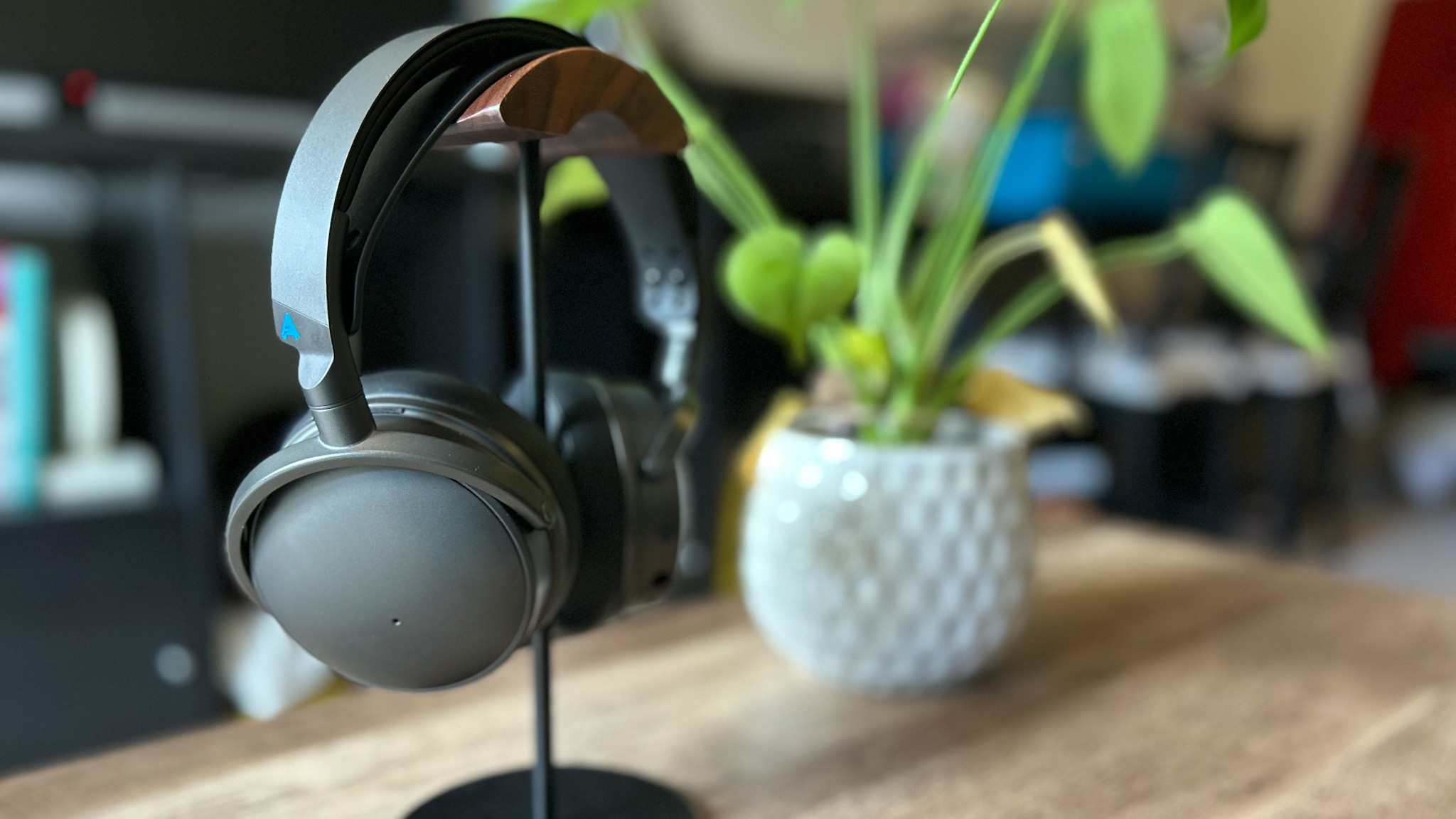GamesRadar+ Verdict
The Audeze Maxwell is the next brilliant step for a legendary line of audiophile gaming headsets. With an incredible soundstage and impressive detailing and balance, everything sounds fuller, brighter, and richer with these cups over your ears. Throw in a luxury build, 80-hour battery life, and high-quality noise-isolating mic and you've got one of the best headsets on the market.
Pros
- +
Premium luxury build materials and design
- +
Impressive 80 hour battery life
- +
Massive soundstage makes for excellent immersion
- +
Crisp AI noise isolation on mic
- +
Incredible detail and balance across a range of genres
Cons
- -
Volume and chat mix dials are too close together
Why you can trust GamesRadar+
Audeze has a solid track record for taking its high-end audiophile headphones and turning them into some of the best gaming headsets on the market. That was certainly the case with the previous Penrose model, a 2021 release that blew us away back in the day. Now the Audeze Maxwell is here to pick up the mantle. The Maxwell largely offers the same proposition as the Penrose, a high-end headset at $299.99 / £319 (for the PlayStation variant we've tested) with a wide soundscape and excellent detailing. However, there's plenty more grunt under the hood here, combined with a boosted battery life, extra controls, and a far more sophisticated build.
| Price | $299-$329 / £319-£349 |
| Connection | 2.4GHz / Bluetooth / Wired |
| Driver | 90mm Planar Neodymium |
| Frequency response | 10Hz - 50kHz |
| Microphone | Detachable boom / onboard beamforming |
| ANC | None |
| Controls | Volume, mic mute, mic volume, noise reduction, power, media playback |
| Battery | 80 hours |
| Compatibility | PS5, PC, Nintendo Switch, mobile (Xbox variant available) |
Design
- Sturdy design with a luxury premium finish
- Limited headband adjustment options
- Loads of controls at your fingertips
Just looking at the Audeze Maxwell, it's clear that this headset is miles ahead of the Penrose. Whereas the former was content with a plastic chassis, the aluminium and steel build of the new release makes for a particularly premium finish. This is a solid piece of kit, weighing in at 450g but with the durability and sturdiness to pull it off. It's by no means the largest gaming headset I've had my hands on, but it's certainly hefty, with large round earcups and thick padding on each side.
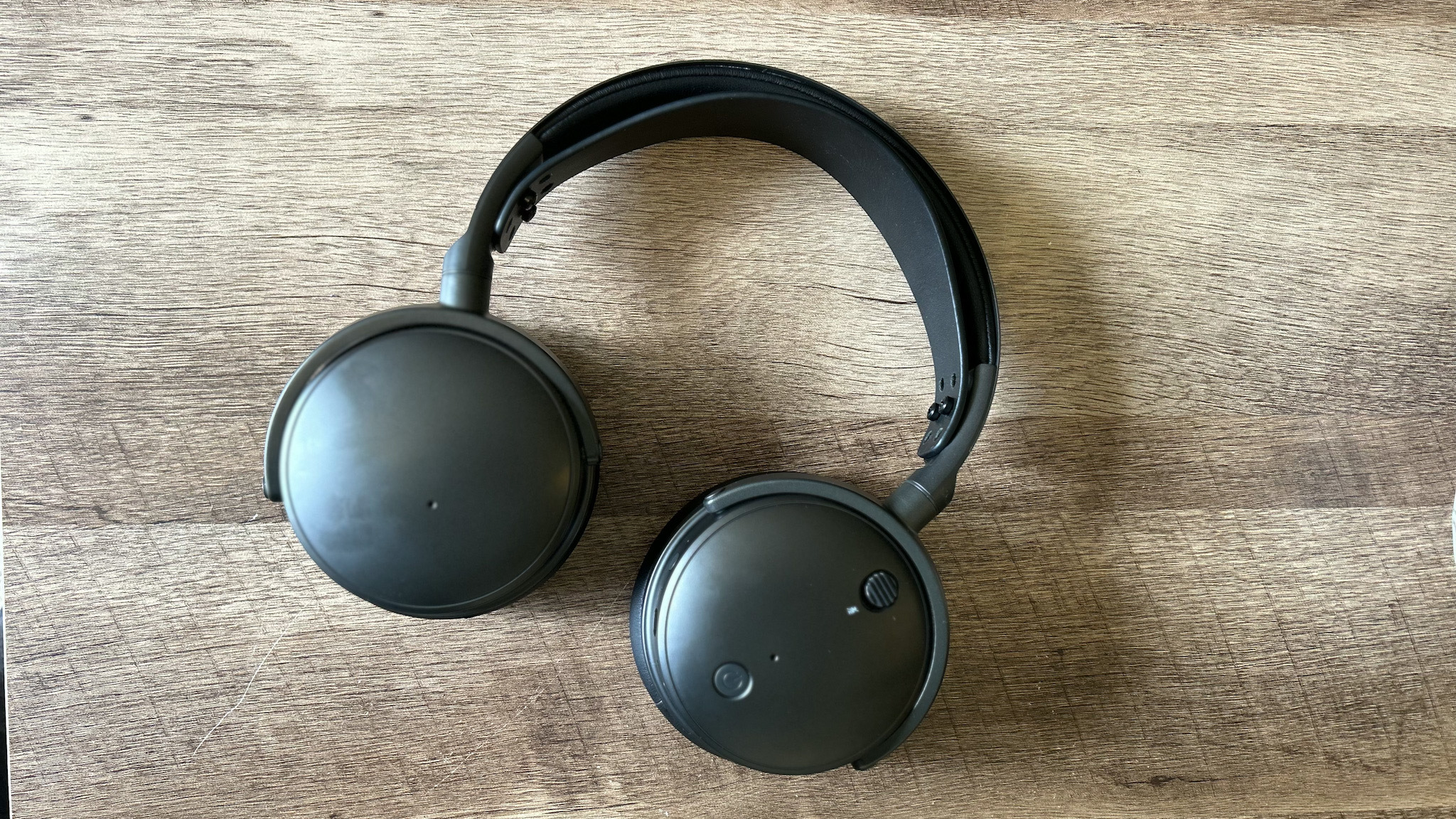
That might make it sound bulky, but in reality, the plush leatherette cups and suspension headband work hard to keep things comfortable here. I never had any clamping discomfort when staying in-game or listening to music for longer periods of time. Temperatures can climb a little thanks to that insulating inner material, but it never got in the way of everyday comfort.
Unlike the SteelSeries Arctis Nova Pro, there's no height adjustment to the band as a whole, though there are three degrees of movement for the inner strap. Thankfully, the Maxwell was comfortable straight out of the box for me, but it's worth considering if you have a particularly large or small head.
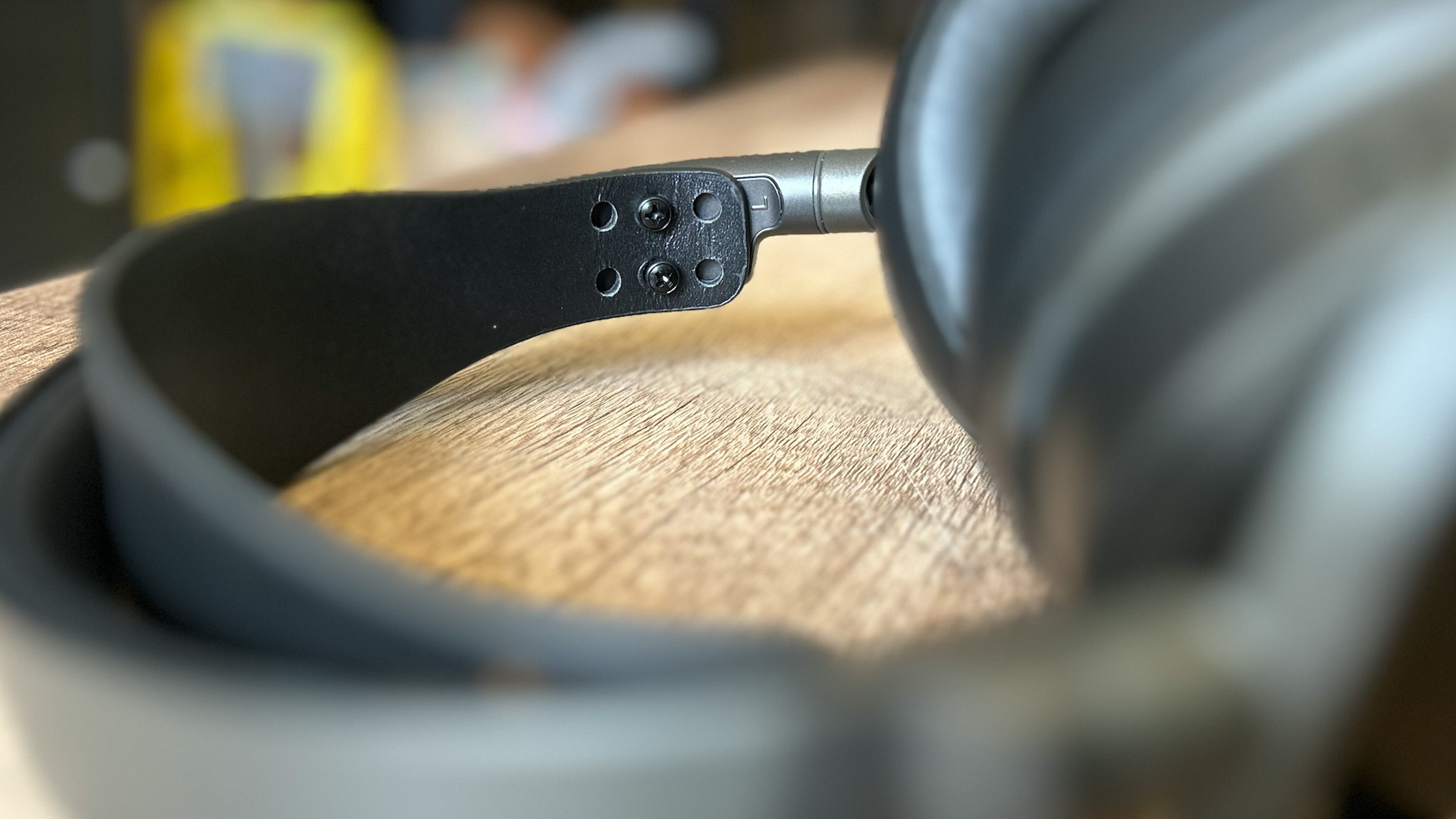
There's an impressive array of controls adorning the left side here. Dedicated master and mic volume dials are great to see separated, and will no doubt come in handy for fine-tuning your online sessions, but are easily confused when placed so close together like this. I was repeatedly fumbling for the main volume wheel, and never quite sure which setting I was adjusting first. That said, I'm a big fan of the sturdy, responsive click to each of these dials. The notched design keeps things precise but still free moving - requiring an intuitive amount of force to either roll all the way to the top or adjust in smaller increments.
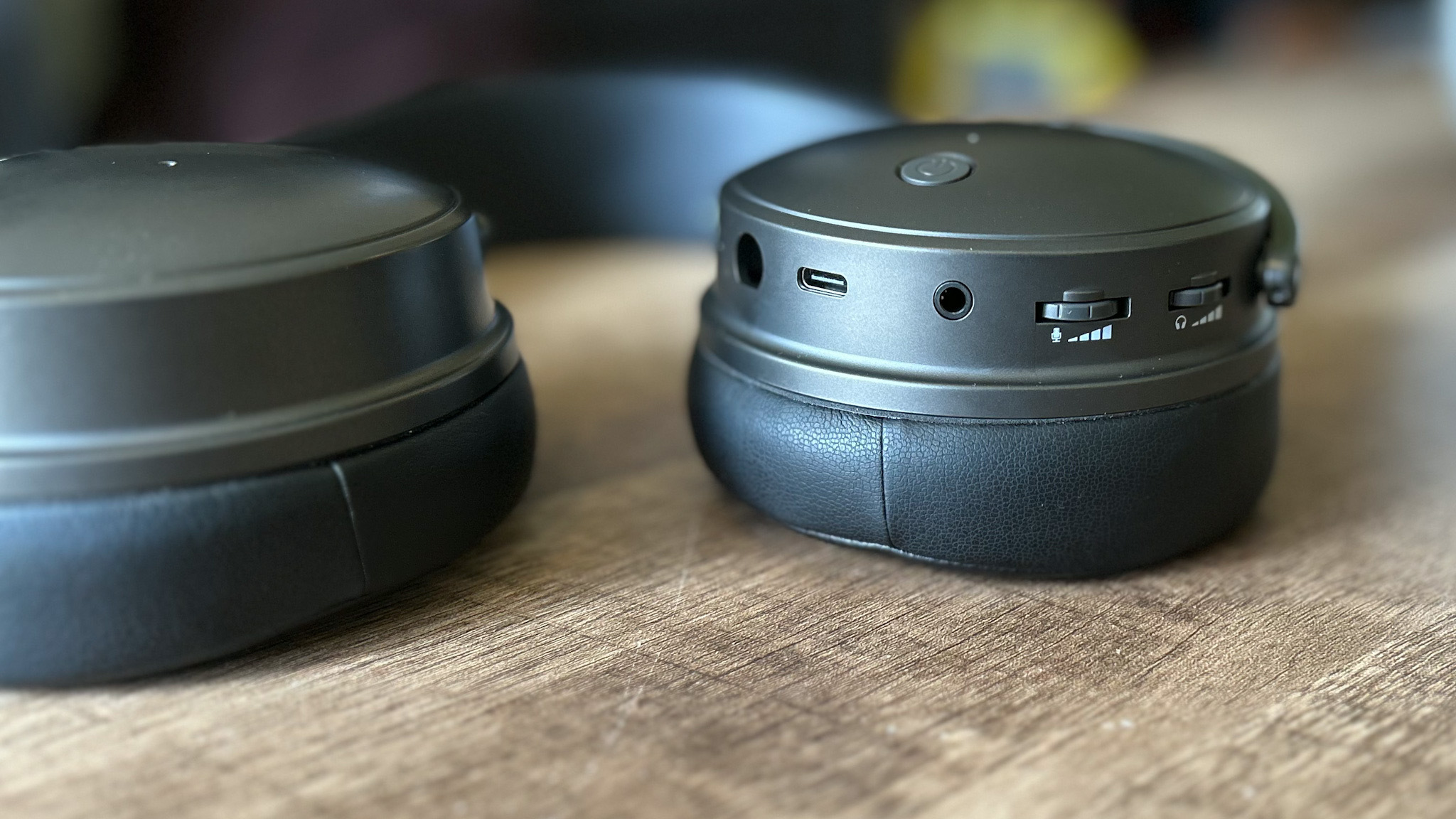
Elsewhere, you'll find a button to toggle the AI noise reduction on the mic as well as dual-function controls for sidetone adjustments, media playback, Bluetooth pairing, and EQ preset selection. That's a vast amount of options ready at your fingertips, so it's impressive that things never felt cumbersome or claustrophobic here. We rarely see PS5 headsets offering such features - they're largely relegated to the world of the best PC gaming headsets. Committing each function to memory took a little learning, but once there, I never had to exit a game to keep the audio on point.
Finally, the Maxwell uses a swivel design in its cups which makes for excellent portability and additional comfort when wearing the headset around the neck. The hinge itself feels solid, keeping the cup in whichever position it's placed in perfectly without rattling or wobbling.
Features
- Seriously impressive battery life
- Expansive planar drivers
- AI mic noise isolation is particularly crisp
There are two features doing the heavy lifting for gamers here; the 80 hour battery life and those 90mm planar drivers. The former is well above industry average for a wireless gaming headset, especially with the power of the Maxwell. After a full charge out the box, I nearly made it to three weeks without having to plug in. That's using a 2.4GHz connection across PS5, Nintendo Switch, and PC, for around four hours a day mixing between gameplay, streaming, and music. Not only that, but once that monthly charge does roll around you'll be good for a 25% charge boost after just 20 minutes on the cable. Considering that's a good 20 hours, this is a seriously impressive battery, making the Maxwell one of the best wireless gaming headsets I've had my hands on.
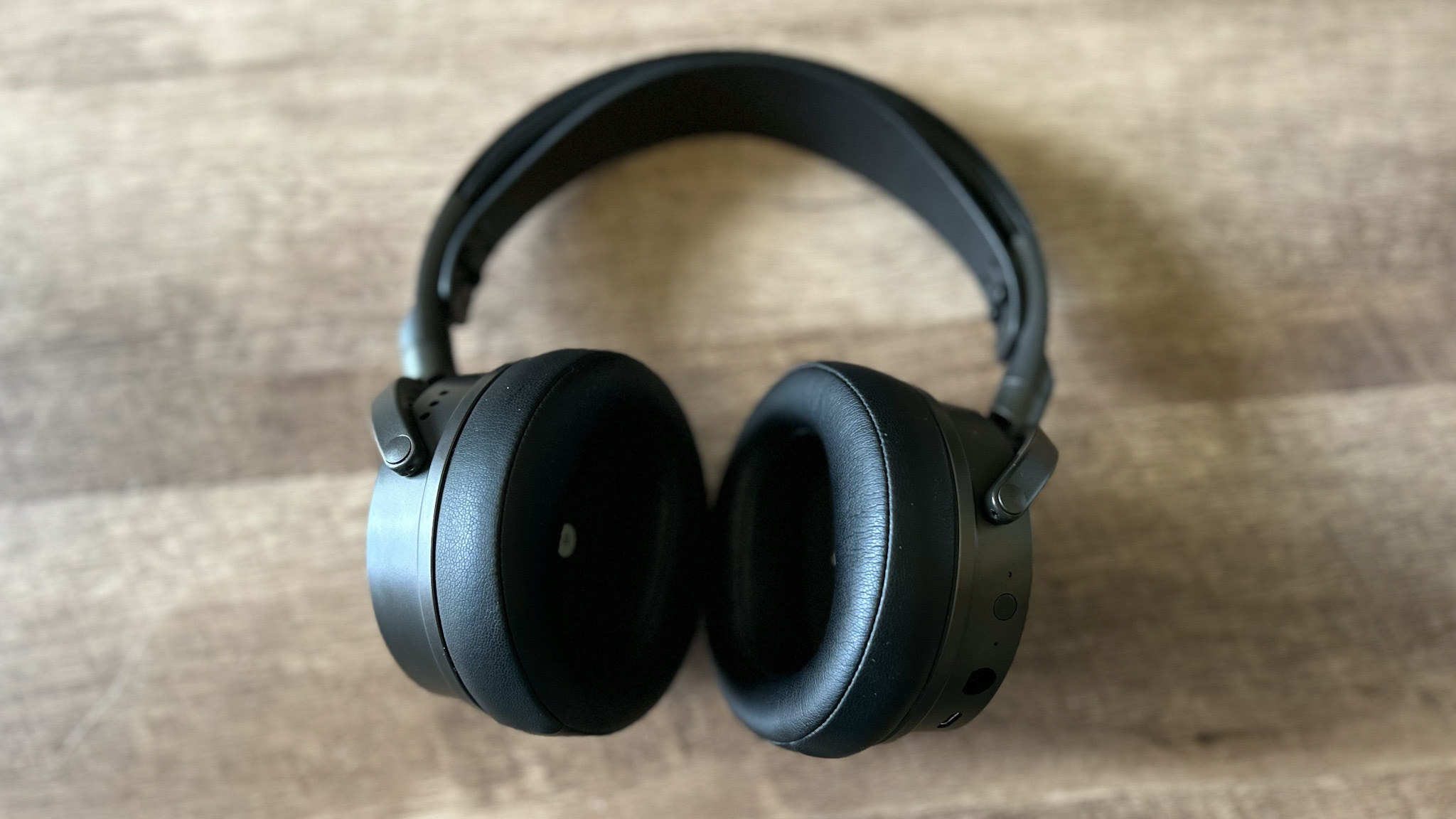
Onto the goods, then. The 90mm planar drivers under the hood make for an astounding listening experience. While they're a little smaller than the 100mm design used in the Penrose, there's still plenty of grunt here and a massive sound stage to take advantage of. Rather than offering the coned design of a dynamic driver, a planar design uses a flat diaphragm with two magnets on either side creating the vibrations necessary. The result is a more open soundstage thanks to the additional space for lower frequencies. The Maxwell's drivers don't carry the punchy bass tones many have come to expect from a gaming headset, but the alternative is a wonderfully expansive area of sound that still manages to pack some serious power when needed.
There's no active noise cancellation here, but the seal created by the cups works to block out the vast majority of everyday household noises. Meanwhile, the mic sports AI-powered noise isolation for a super clear result.
Performance
- Massive soundstage makes for excellent immersion and direction
- Emphasis on bass and high ranges with weaker middle
- EQ presets don't impact general audio quality too much
The Audeze Maxwell manages to pair low latency response times with audiophile-level sound quality, largely from the immense soundstage on offer. There's so much room in between these drivers, it was like stepping into a completely different game on the first test. That means directional audio is pinpoint specific, making for particularly stealthy maneuvres in Counter Strike, but it's not just left and right spatial awareness you're getting here. The wider range and excellent detailing also make it possible to define almost everything about a footstep or gunshot instinctively. I could work out exactly how far away gunfire was taking place, and even in some instances could tell when these skirmishes were happening behind walls or in certain buildings. That's incredibly immersive, and a silver bullet for anyone looking to play competitively.
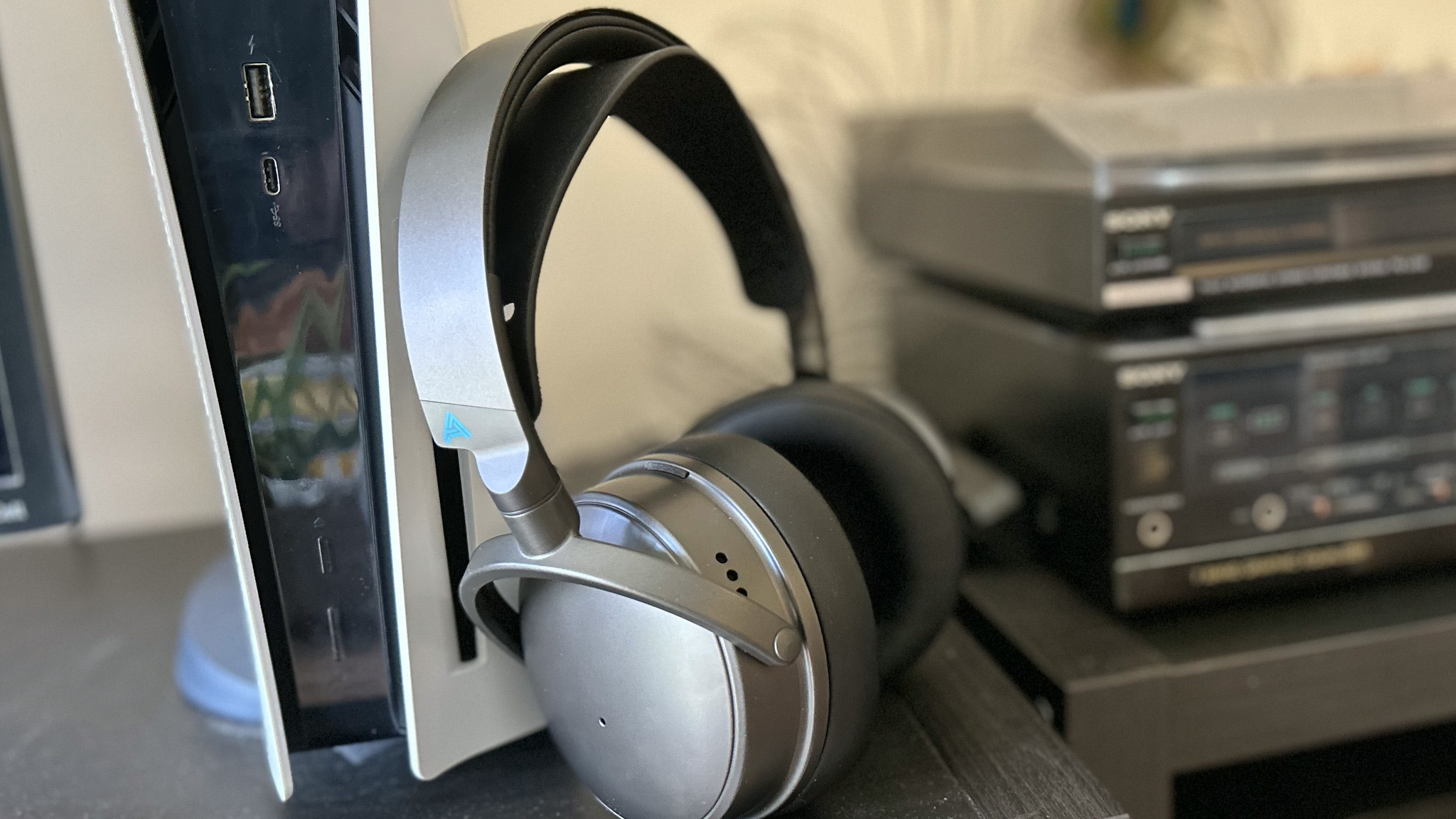
The rumble of the low end and emphasized high end balanced nicely across a range of genres, making for a dynamic experience in everything from messier Doom Eternal arenas to the echoes of The Last of Us Part 2's corridors. The former offered up a nice full sound with an excellent distinction between the punchy music, cacophony of different gun timbres, and smaller pickup sound effects. Out-of-the-box settings required a little tweaking for me to fully enjoy the ground-shaking bass experience I've come to expect from Doom, but with the Bass Boosted preset clicked into place everything felt a little more impactful. Still, even with this bass boost on I was able to appreciate the complex multi-layered soundtracks even more than usual, noticing layers I hadn't heard before thanks to the greater attention to detail.
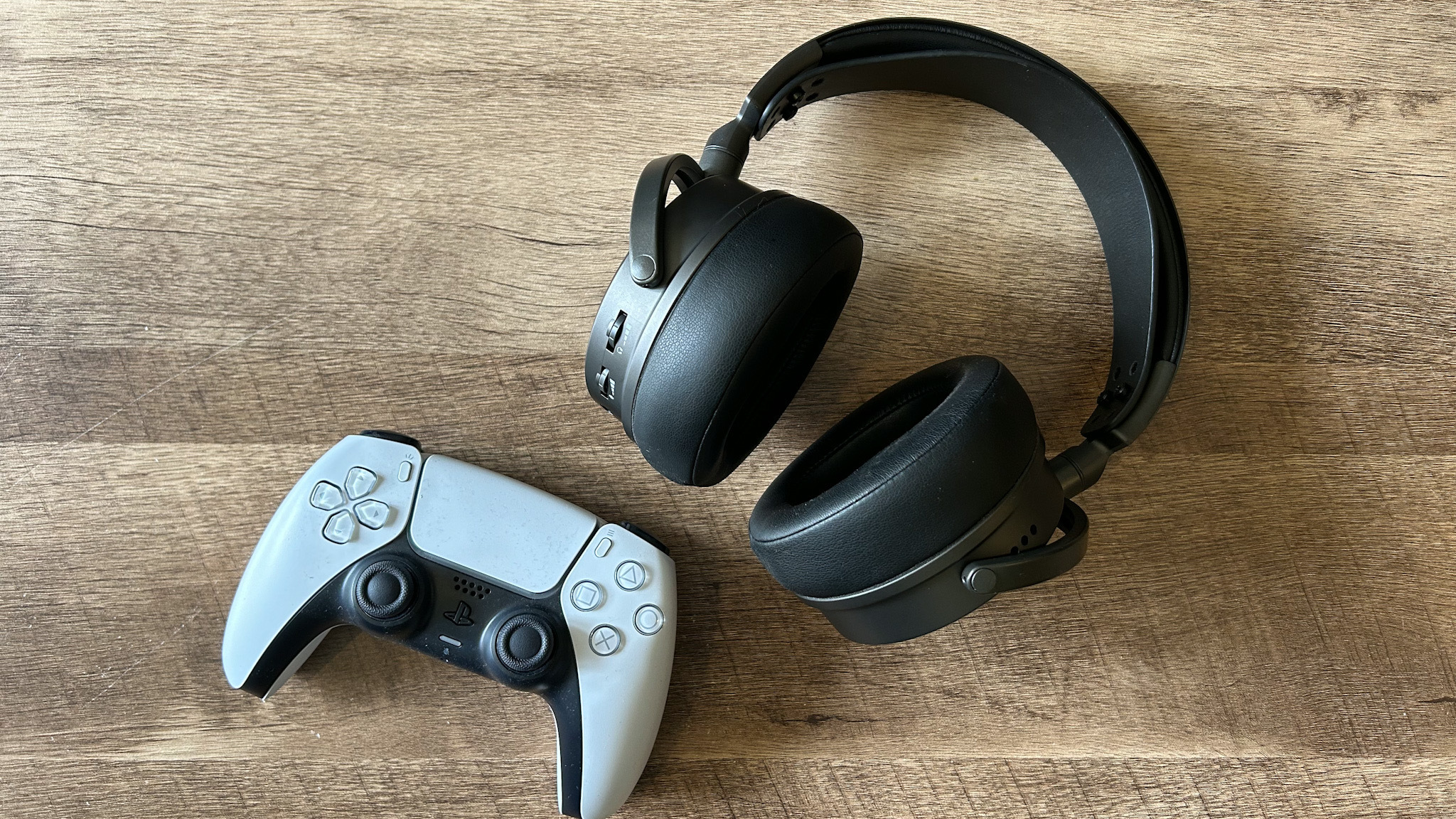
The Last of Us Part 2 benefitted equally from the wide dynamic range, though in the opposite way. A stealth progression through an abandoned elementary school provided the perfect backdrop for the Audeze Maxwell to show what it's made of and the wider soundscape truly shone through here. I was almost tracking clicker echoes as they bounced around walls and desks, ears pricking at a shuffle in the next room over, and jumping in terror as clueless NPCs clattered around the place.
I've always found that Horizon Forbidden West presents a bigger challenge for high-end headphones, though. There's something about the open world landscape, with its jumble of delicate machine noises threatening to overpower the audio and the heightened volume of Aloy's own movements. The game naturally tends to live in the middle ranges, so the Maxwell's attention to each extreme range caused it to suffer a little. Everything felt shunted down towards the lower range as a result; I lost pretty much all other audio when riding a mount, and the thud of each of Aloy's footsteps managed to overwhelm even passing dialogue and environmental effects. That said, there was still a commendable amount of clarity in some particularly crowded fight scenes, and I did stop to notice the rustling of leaves under the rain which was a stunningly detailed experience.
Should you buy the Audeze Maxwell?
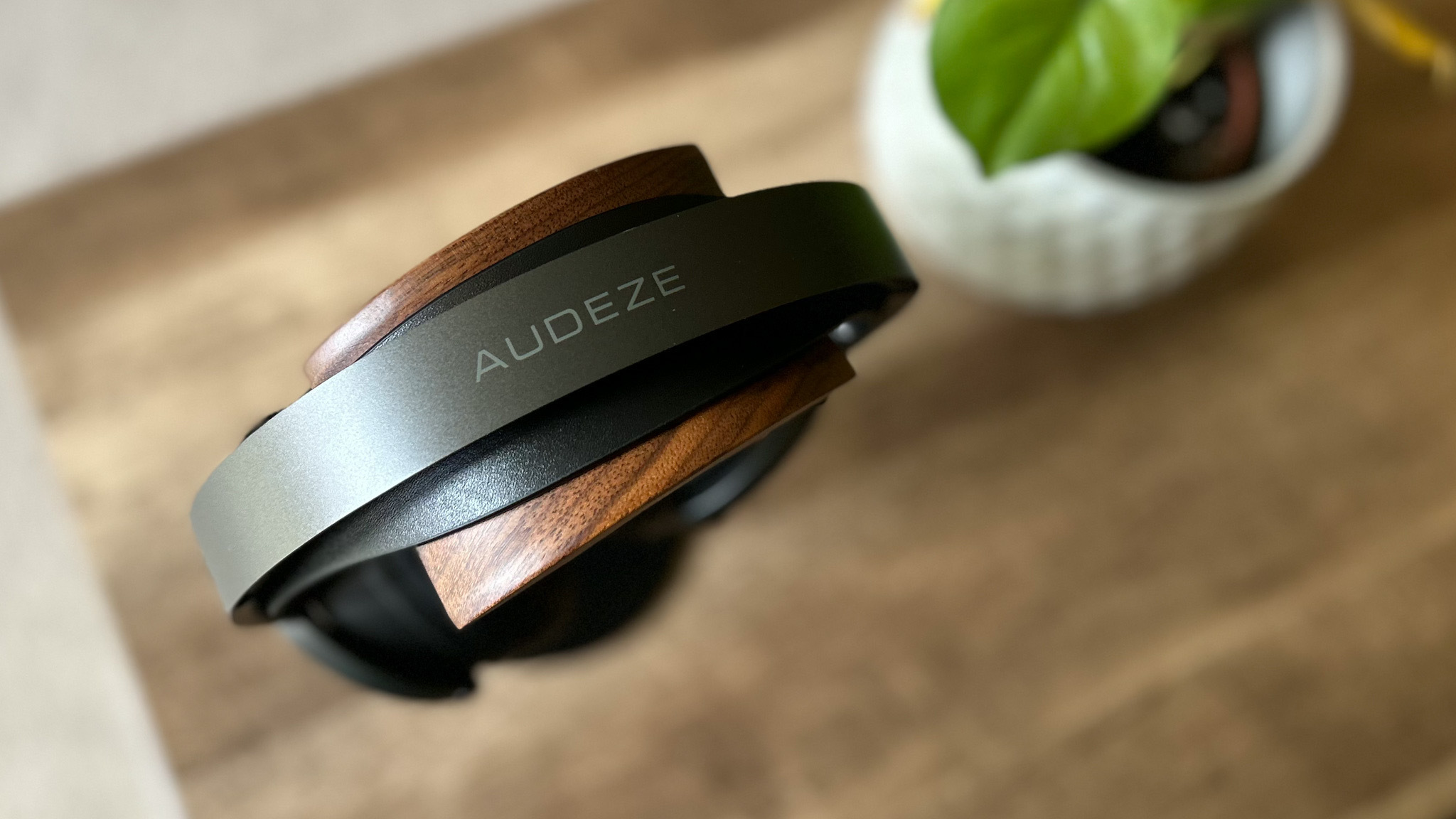
The Audeze Maxwell offers the best audio I've personally heard from a gaming headset, and it doesn't top the price charts. At $299 / £319 for the PS5 version (jumping up to $329 / £349 for the Xbox Series X headset), this is an expensive piece of kit, but it does feel well-priced. Those planar drivers are working particularly hard for your overall immersion, and while favorites will come down to personal preference I can't imagine going back to a dynamic driver for my daily play. If you're after a luxury audio experience for single-player or competitive games, this is a grail.
It also stacks up fairly nicely when compared to our number-one pick for the best headset on the market right now. The SteelSeries Arctis Nova Pro Wireless does still take the edge overall, but largely down to its extra features. Yes, you're spending a little more at $349 / £329, but the swappable battery packs and active noise cancellation are - generally speaking - worth the extra cash. Of course, certain playstyles will negate that completely. The audio quality of the Maxwell is of a higher level than the Nova Pro, so if you're an audiophile purist I'd recommend dropping those additional extras.
Lastly, it goes without saying that the Maxwell is a much better gaming headset than the Audeze Penrose before it. The brand has now discontinued the older release, as it occupies the same price bracket as the new kid, but if you do find stock and you're considering the previous model, it's worth noting that the Maxwell improves on the Penrose in pretty much every area.
| Specs | Audeze Maxwell | SteelSeries Arctis Nova Pro Wireless | Audeze Penrose |
|---|---|---|---|
| Price | $299-$329 / £319-£349 | $349.99 / £329 | $299-$329 / £319-£349 |
| Connection | 2.4GHz / Bluetooth / Wired | 2.4GHz / Bluetooth / Wired | 2.4GHz / Bluetooth / Wired |
| Driver | 90mm Planar Neodymium | 40mm SteelSeries Premium High Fidelity Drivers | 100mm Planar Neodymium |
| Frequency response | 10Hz - 50kHz | 10Hz - 40kHz | 10Hz - 50kHz |
| Microphone | Detachable boom / onboard beamforming | Bidirectional | Broadcast-quality |
| ANC | None | Yes | None |
| Controls | Volume, chat balance, mic mute, mic volume, noise reduction, power, media playback | Power, ANC, mic mute, volume, Bluetooth | Power, mic mute, mic volume, volume |
| Battery | 80 hours | 22 hours per battery (hot-swappable) | 15 hours |
| Weight | 490g | 337g | 320g |
| Compatibility | PS5, PC, Nintendo Switch, mobile (Xbox variant available) | PS5, PC, Nintendo Switch, mobile (Xbox variant available) | PS5, PC, Nintendo Switch, mobile (Xbox variant available) |
How we tested the Audeze Maxwell
I used the Audeze Maxwell for three weeks, using the headset as my daily driver for all things gaming, music, and streaming. In that time I primarily tested in everyday sessions across CS:GO and Doom Eternal on PC, and The Last of Us Part 2 on PS5 with some additional testing across Horizon Forbidden West. I also used the Maxwell for Nintendo Switch sessions, running Dragon Quest Builders 2 and Pokemon Legends: Arceus. For more information on how we test gaming headsets, check out the full GamesRadar+ Hardware Policy.
We're also rounding up all the best Nintendo Switch headsets and the best Xbox One headsets for more console-specific options. Or, take a look at the best Steam Deck headsets if you're looking for something to take on the road.

Managing Editor of Hardware at GamesRadar+, I originally landed in hardware at our sister site TechRadar before moving over to GamesRadar. In between, I've written for Tom’s Guide, Wireframe, The Indie Game Website and That Video Game Blog, covering everything from the PS5 launch to the Apple Pencil. Now, i'm focused on Nintendo Switch, gaming laptops (and the keyboards, headsets and mice that come with them), PS5, and trying to find the perfect projector.

